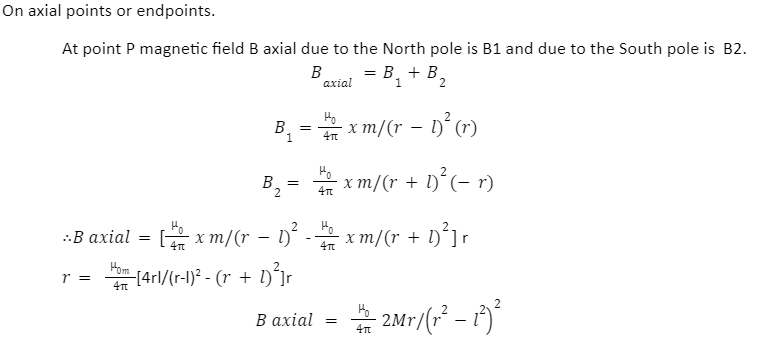It is the limit of either an electric current closed-loop or a pair of poles when the size of the source is lowered to zero while keeping the magnetic moment constant. A magnetic dipole can be defined as the limit of a closed loop of electric current or as the limit of a pair of poles. This dipole is a magnetic equivalent of the electric dipole, albeit the analogy isn’t completely accurate.
Magnetic dipole moments have dimensions equal to the product of current times area or energy divided by the density of magnetic flux. The particular unit for dipole moment in the metre–kilogram–second–ampere and SI systems is the ampere–square metre. For electromagnetic systems based on the centimetre–gram–second scale, the unit of measure is the erg (unit of energy) per gauss (unit of magnetic flux density). One ampere-square metre is equal to a thousand ergs per gauss in Gaussian units. The Bohr magneton (equal to 9.27 10-24 ampere–square metre) is a suitable quantity for measuring the magnetic dipole moment of electrons since it is easily measured. The nuclear magneton (equal to 5.051 x 10-27 ampere–square metre) is a unit of the magnetic moment for nuclei, protons and neutrons that is analogous to the nuclear magneton.
What is a magnetic dipole?
A magnetic dipole, which is often a tiny magnet with microscopic to subatomic size, is equal to the flow of electric charge around a loop in the electromagnetic field. Magnetic dipoles include electrons circulating around atomic nuclei, electrons spinning on their axes and positively charged atomic nuclei rotating around their centres of mass. The aggregate of these effects may cancel out and a given type of atom may not be a magnetic dipole as a result of this cancellation. The atom is a permanent magnetic dipole if the electrons and protons do not completely cancel out, as is the case with iron atoms. Many millions of iron atoms spontaneously locked into the same alignment to produce a ferromagnetic domain also contribute to the formation of a magnetic dipole by aligning themselves in the same way. Macroscopic magnetic dipoles include compass needles and bar magnets, which are examples of which are found in nature.
The magnetic dipole moment, also known as the strength of a magnetic dipole, can be thought of as a measure of a dipole’s capacity to bring itself into alignment with a given external magnetic field and it is measured in nanoseconds. It is known that the size of a dipole moment is proportional to the maximum amount of torque applied to the dipole in a uniform magnetic field. The maximum amount of torque is applied to the dipole when it is located at right angles to the magnetic field. It is therefore possible to define the magnetic dipole moment, also known as the magnetic moment, as the greatest amount of torque induced by magnetic force on a dipole that arises per unit value of the surrounding magnetic field in a vacuum.
Magnetic dipole moment
The magnetic dipole moment is defined as the product of the distance (2 l) between the two poles and the pole strength of either of the two poles.
Moment of dipole in magnetism
M is equal to m. (2 l)
Its SI unit is the ‘joule/tesla’ or the ‘ampere-meter2’, respectively.
Its movement is in the direction of the south pole toward the north pole.
Assuming that a magnetic dipole is assumed to be a current loop in this case, the amount of a magnetic dipole’s moment is proportional to the current multiplied by the size of the enclosed area. If the dipole moment is represented mathematically as a vector, then the direction of the dipole moment is perpendicular to one side of the surface that is surrounded by the circular path of positive charge flow. If we consider the current loop to be a miniature magnet, this vector corresponds to the direction from the south pole to the north pole of the magnet circuit. When allowed to rotate freely, dipoles align themselves so that their moments are oriented mostly in the direction of the external magnetic field, which is called polarisation. Quantized nuclear and electron magnetic moments can only be orientated in space at specific discrete angles with respect to the direction of the external field, which means that they cannot be oriented in space at any other angles than the direction of the external field.
Derivation of magnetic field on axial point.

Conclusion
A magnetic dipole is often a tiny magnet with microscopic to subatomic size. It is equal to the flow of electric charge around a loop in the electromagnetic field. The Bohr magneton (equal to 9.27 10-24 ampere–square metre) is a suitable quantity for measuring its magnetic moment. The magnetic dipole moment is the greatest amount of torque induced by magnetic force on a dipole that arises per unit value of the surrounding magnetic field in a vacuum. It can be measured in nanoseconds, and is also known as the magnetic moment.
 Profile
Profile Settings
Settings Refer your friends
Refer your friends Sign out
Sign out






